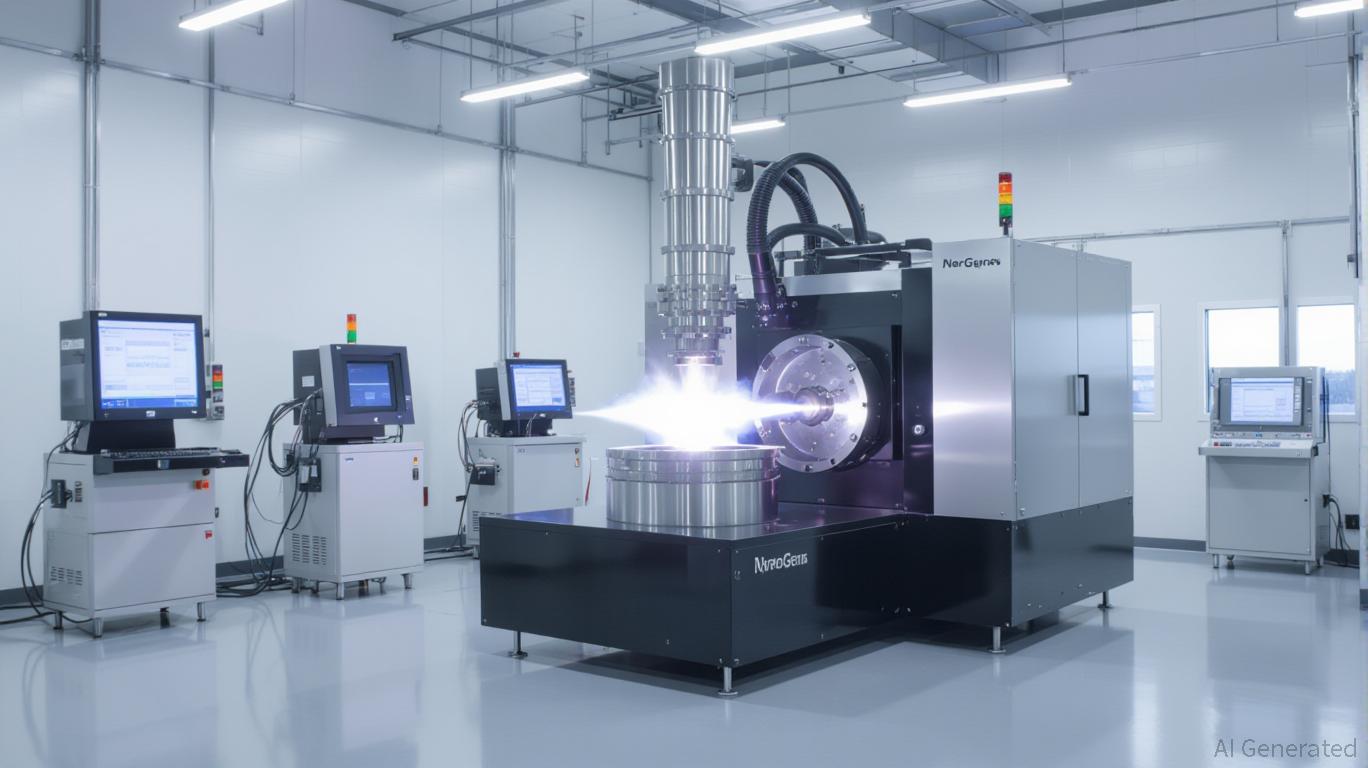
PyroGenesis Canada Inc. (NYSE: PYR) has emerged as a pivotal player in the global additive manufacturing (AM) revolution, leveraging proprietary plasma atomization technology and a direct-to-customer distribution model to dominate the high-margin titanium powder market. As the European AM sector surges in response to energy transition and industrial decarbonization demands, PyroGenesis’ strategic pivot has positioned it to capitalize on a market projected to grow from $214 million in 2023 to $1.4 billion by 2032. This analysis explores how the company’s technological innovation and operational agility are creating a moat in a sector poised for exponential growth.
The Shift to Direct Distribution: A Game-Changer in Market Penetration
In 2025, PyroGenesis terminated its exclusive distribution agreement with Aubert & Duval, a subsidiary of Eramet Group, and adopted a direct-to-customer model in Europe. This move eliminated intermediaries, reducing costs for end users while enabling PyroGenesis to engage directly with key industrial clients. The strategy paid off immediately: in April 2024, the company secured its first European aerospace contract, supplying titanium powder with a 15-63µm particle size range to a Spanish client for laser bed additive manufacturing. This milestone validated the efficacy of the direct model, which now allows PyroGenesis to build long-term relationships with aerospace, defense, and automotive clients in Europe.
The European AM titanium powder market is expanding at a compound annual growth rate (CAGR) of 23–25% in key regions like Germany, the UK, and France. By cutting out distribution layers, PyroGenesis not only improves profit margins but also accelerates time-to-market for its clients, a critical advantage in sectors like aerospace, where supply chain reliability is paramount.
Plasma Atomization: A Decarbonization-Ready Technology
At the heart of PyroGenesis’ competitive edge is its NexGen™ plasma atomization system, which produces high-purity titanium and aluminum powders using fully electric plasma torches. Unlike traditional gas-based methods that rely on fossil fuels, this technology operates with zero direct emissions, aligning with the European Union’s stringent decarbonization targets. The system’s ability to produce powders with consistent particle size and shape is particularly valuable for AM applications, where precision is non-negotiable.
The environmental benefits are quantifiable: plasma atomization reduces greenhouse gas (GHG) emissions by up to 80% compared to conventional processes, while also lowering energy consumption by 30%. As industries like aerospace and automotive ramp up demand for lightweight, high-strength materials to meet energy transition goals, PyroGenesis’ technology is uniquely positioned to meet these needs. For example, its titanium powders are now undergoing certification for use in Boeing’s additive manufacturing supply chain, a partnership that could unlock billions in aerospace contracts.
High-Margin Demand in Energy Transition Sectors
The European titanium powder market for AM is a high-margin, high-growth niche, driven by demand from energy transition-aligned sectors. Aerospace accounts for the lion’s share of this demand, with lightweight titanium components enabling fuel efficiency and reduced carbon footprints. Similarly, the automotive industry is adopting AM to produce complex, lightweight parts for electric vehicles (EVs), while the energy sector is leveraging titanium powders for corrosion-resistant components in renewable energy infrastructure.
PyroGenesis’ strategic partnerships are accelerating its capture of these markets. A letter of intent with Evonik, a global chemical giant, and a memorandum of understanding (MOU) with GE Vernova’s Power Conversion division signal growing industry validation. These collaborations are not just about sales—they’re about embedding PyroGenesis’ plasma technology into the broader industrial decarbonization ecosystem.
Investment Thesis: A Triple-Threat Play
PyroGenesis offers investors exposure to three overlapping megatrends: industrial decarbonization, additive manufacturing adoption, and the global energy transition. Its direct distribution model ensures high margins in a market growing at 15–25% CAGR, while its plasma atomization technology provides a defensible moat against competitors. Additionally, the company’s alignment with European regulatory frameworks and sustainability goals creates a tailwind for long-term growth.
For investors seeking to position portfolios for the energy transition, PyroGenesis represents a compelling case study. The company’s recent Boeing certification and European market traction suggest it is on a trajectory to dominate a critical node in the AM supply chain. However, risks remain, including regulatory shifts and the high capital intensity of scaling plasma atomization systems.
Conclusion: A Strategic Play for the AM Decade
PyroGenesis’ strategic breakthrough in Europe underscores its role as a linchpin in the additive manufacturing and decarbonization revolutions. By combining proprietary technology with a direct-to-customer approach, the company is not just capturing market share—it is redefining industry standards. As the European AM titanium powder market balloons to $4.2 billion by 2033, PyroGenesis’ ability to align with energy transition goals positions it as a must-watch for investors targeting the next industrial frontier.
